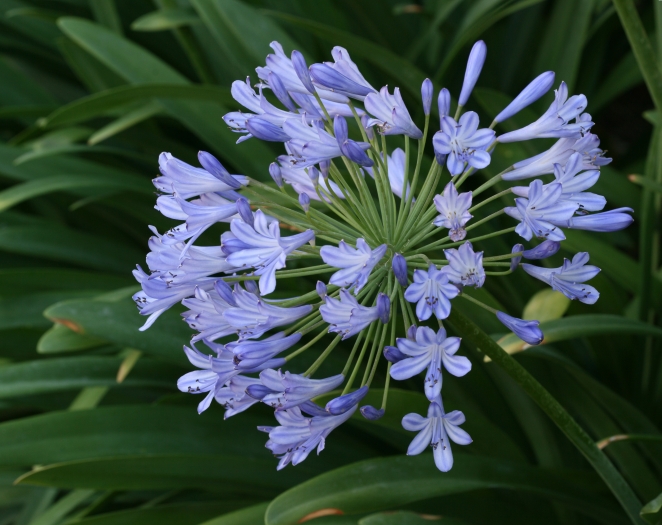African Lily
(Agapanthus praecox)
African Lily (Agapanthus praecox)
/
/

Victorrocha
CC BY-SA 3.0
Image By:
Victorrocha
Recorded By:
Copyright:
CC BY-SA 3.0
Copyright Notice:
Photo by: Victorrocha | License Type: CC BY-SA 3.0 | License URL: https://creativecommons.org/licenses/by-sa/3.0 | Uploader: Victorrocha~commonswiki | Publisher: Wikimedia Commons | Title: Agapanthus_Postbloom.jpg | Notes: {{Information |Description=Female cone of New Zealand Kauri (''Agathis australis''), Auckland, New Zealand. This cone is one year or so old; a cone takes three years to mature |Source=own work |Date=4 November 2006. |Author=Kahuroa |Permission=Released





















































Estimated Native Range
Summary
Agapanthus praecox, commonly known as African Lily, is an evergreen perennial herb native to the Eastern Cape Province of South Africa, where it thrives in open woodlands and along forest edges. It can reach up to 1 meter in height and is known for its clumping habit and strap-shaped leaves. The flowers, which are typically blue, purple, or white, are arranged in large, globular umbels and bloom from late spring to summer, providing a showy display. The flowers give way to capsules filled with fine black seeds. African Lily is appreciated for its long flowering period and its ability to withstand tough conditions such as sun and heat.
African Lily is valued for its ornamental flowers and is often used in borders, container gardens, and as a focal point in landscape designs. It is also popular for its low maintenance requirements and drought tolerance once established. The plant prefers well-drained soil and can tolerate poor soils; it thrives in full sun but can also handle partial shade. While it does not like to be moved, propagation can be achieved through sowing or division of clumps. It is important to note that the roots are very strong and can cause damage to structures like concrete. In regions with cold winters, it can overwinter as a stump, disappearing completely during the cold months, but it can withstand frost and cold down to −15 °C with proper mulching during the first two years. Agapanthus praecox can be invasive outside its native range, so gardeners should check local regulations before planting.CC BY-SA 4.0
African Lily is valued for its ornamental flowers and is often used in borders, container gardens, and as a focal point in landscape designs. It is also popular for its low maintenance requirements and drought tolerance once established. The plant prefers well-drained soil and can tolerate poor soils; it thrives in full sun but can also handle partial shade. While it does not like to be moved, propagation can be achieved through sowing or division of clumps. It is important to note that the roots are very strong and can cause damage to structures like concrete. In regions with cold winters, it can overwinter as a stump, disappearing completely during the cold months, but it can withstand frost and cold down to −15 °C with proper mulching during the first two years. Agapanthus praecox can be invasive outside its native range, so gardeners should check local regulations before planting.CC BY-SA 4.0
Plant Description
- Plant Type: Herb
- Height: 2-4 feet
- Width: 1-2 feet
- Growth Rate: Moderate
- Flower Color: Blue, Purple, White
- Flowering Season: Spring, Summer
- Leaf Retention: Evergreen
Growth Requirements
- Sun: Full Sun, Part Shade
- Water: Medium
- Drainage: Slow, Medium
Common Uses
Bank Stabilization, Bee Garden, Bird Garden, Border Plant, Butterfly Garden, Deer Resistant, Drought Tolerant, Groundcover, Hummingbird Garden, Potted Plant, Rabbit Resistant, Rock Garden, Salt Tolerant, Showy Flowers, Street Planting
Natural Habitat
Native to open woodlands and along forest edges in the Eastern Cape Province of South Africa
Other Names
Common Names: African Blue Lily, Lily Of The Nile, Common Agapanthus, Lily-Of-The-Nile, Afrikas Blå Lilja
Scientific Names: , Agapanthus praecox, Agapanthus giganteus, Tulbaghia praecox,
GBIF Accepted Name: Agapanthus praecox Willd.